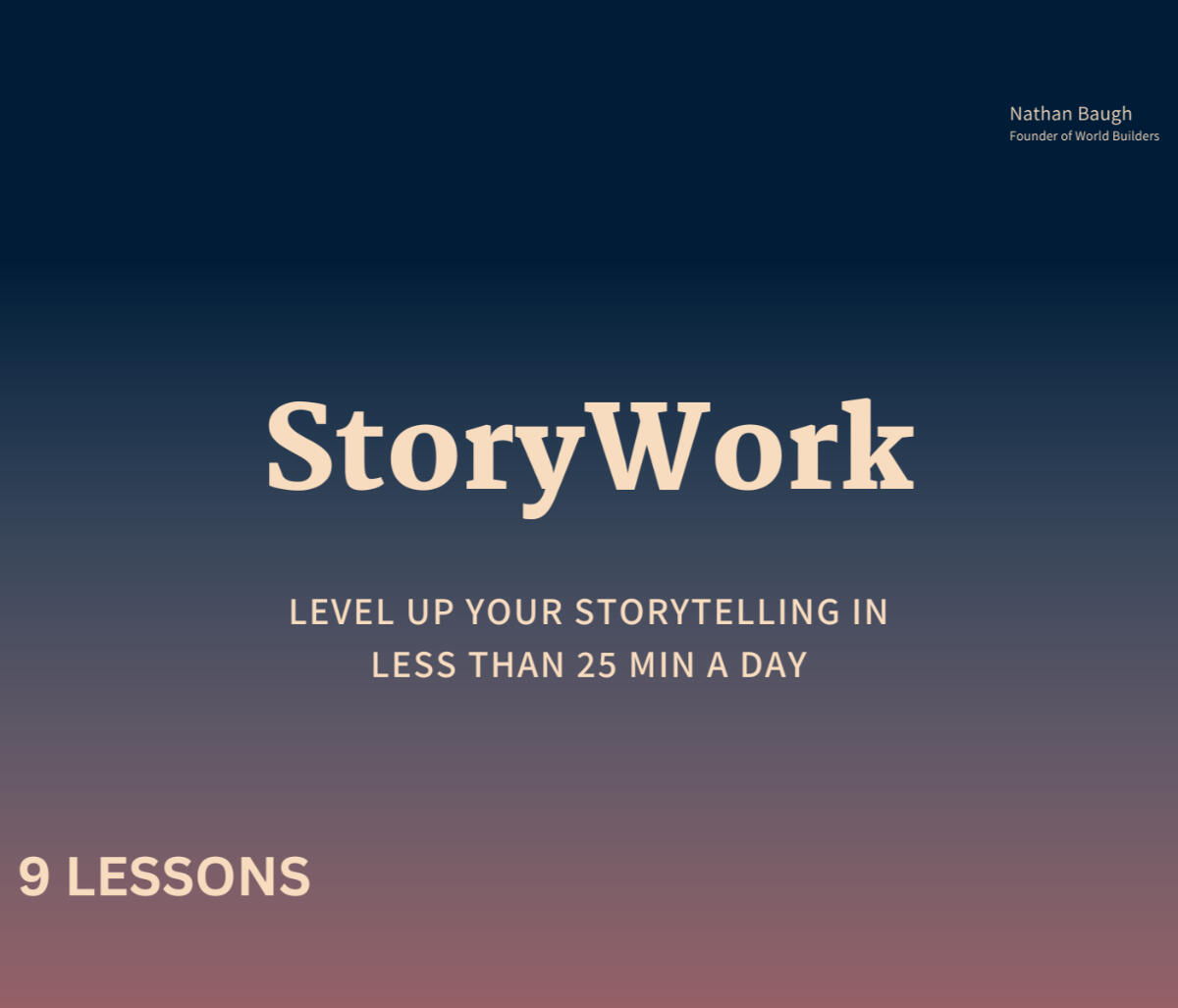- World Builders
- Posts
- Shared Language
Shared Language
Or, why you should start making up words
Muggles, mudbloods, and squibs.
None of these words are real, yet I bet 90%+ of you know exactly what they mean.
That’s the power of shared language. Your words become like a secret whispered between you and your audience. They say, “We know what these words mean. Those other people, they don’t.”
The best storytellers make up ridiculous words like “Hobbit” or “AirPod.” Not because they’re crazy, but to build a bond with their audience.
So, today’s newsletter focuses on how you can use shared language to tell your stories.
Hope you enjoy — Nathan.
Now to today’s piece 🌎

1 STORYTELLING TIP
In 1910, 18-year-old JRR Tolkien started to build the language “Quenya.” It became the language of the Elves in Lord of the Rings and one of two almost full languages Tolkien created.
But you don’t have to create a completely new language from scratch. Instead, let’s focus on creating a few pieces of shared language.
Creating language lets you claim ideas and present them in new ways to the world. And shared language is how you pull people out of their normal world and introduce them to the world you’ve built.
You read muggle, you’re in the wizarding world of Harry Potter.
You read MacBook, you’re not getting just any rinky-dink laptop.
You read Solopreneur on Twitter or LinkedIn, you think of Justin Welsh.
Creating shared language is the opposite of fitting in. Instead of talking like everyone else, you make your own words. Suddenly, something mundane becomes unique.
So, how do you go about naming ideas and creating shared language? It’s a process of distillation. Very rarely will the perfect words just pop into your head.
I like what Jack Butcher has to say about this, so I’ll leave you with his sage advice:
If this [naming] doesn't come naturally to you, you can work in reverse too.
Distill from a book to an essay, to a paragraph, to a sentence, to a title.
Going through this process of reduction gives you a meta scaffolding for what you're trying to communicate.
It forces you to think in hierarchy, to consider which ideas need to be introduced in which order, which are most salient, which can lead you to a great name.
Shared language is like a magnet pulling your people toward you. Find the right words, find the right people.
Cheers, fellow World Builders.

2 QUICK EXAMPLES
I.
Modify a common phrase to make it yours
George Ten’s one of the best copywriters on Twitter. He’s created a tribe of what he calls “copythinkers.”
The shared language gives levels to copywriting. If you’re stuck on level one, you’re just a boring ol’ copywriter.
But, if you’ve leveled up, you’ve now joined the “copythinkers.”
II.
Build the language into your world
Dickie Bush and Nicolas Cole have built Ship30 into a massive writing business. They lean alllll the way into the nautical theme:
Ship30
The Captain’s Table
The Digital Writing Compass
They even include little boats in their Twitter profiles and encourage students to do the same. If you see someone with a boat, probably means they took Ship30.

Shared language invites people into your world.

3 IDEAS ON STORY, WRITING & CREATIVITY
🧵 1970 to 1988 is often referred to as Disney's "Dark Age." It took a refocus on the very basics of storytelling — The Hero’s Journey — to get Disney roaring again. The next movie it released? The Lion King. (Long post)
✍️ Shared language is a powerful tool for creating new categories. Here’s how it can help you create a category of one. (Essay)
⚒️ Brandon Sanderson teaches creative writing at BYU. But because he’s such a nice guy, he put all 14 lectures on YouTube. I’ve now watched each lecture twice. They’re the best writing lessons I’ve ever listened to. (Videos)

A message from... Me!
The interest in this tweet blew me away...
One way to become a better storyteller:
Take your two favorite authors. I recommend one non-fiction and one fiction.
Copy, word for word, their best work. Do it by hand.
I chose Paul Kalanithi and Neil Gaiman.
It’s the single exercise that improved my writing the most.
— Nathan Baugh (@nathanbaugh27)
3:06 PM • Jan 5, 2023
In my experience, there are two ways to get good at storytelling:
Study the greats (what this newsletter is for)
Practice, practice, practice
I do a lot of practice through StoryWork.
And so many of you liked, commented, and sent me DMs about the practice I decided to turn it into a guided course for you.
Check it out:

When you’re ready to go deeper, here are two ways I can help:
If you want a practical way to improve your writing and storytelling in less than 25 minutes a day, check out StoryWork (125+ students).
To sponsor the newsletter, reply to this email for details.

I’m writing my current book’s first draft by hand. Seems somewhat crazy, but Neil Gaiman has some advice as to why it’s effective. My hand stopped cramping after day three.
What’s a weird writing thing (or a work quirk) you do? Please excuse my handwriting.


